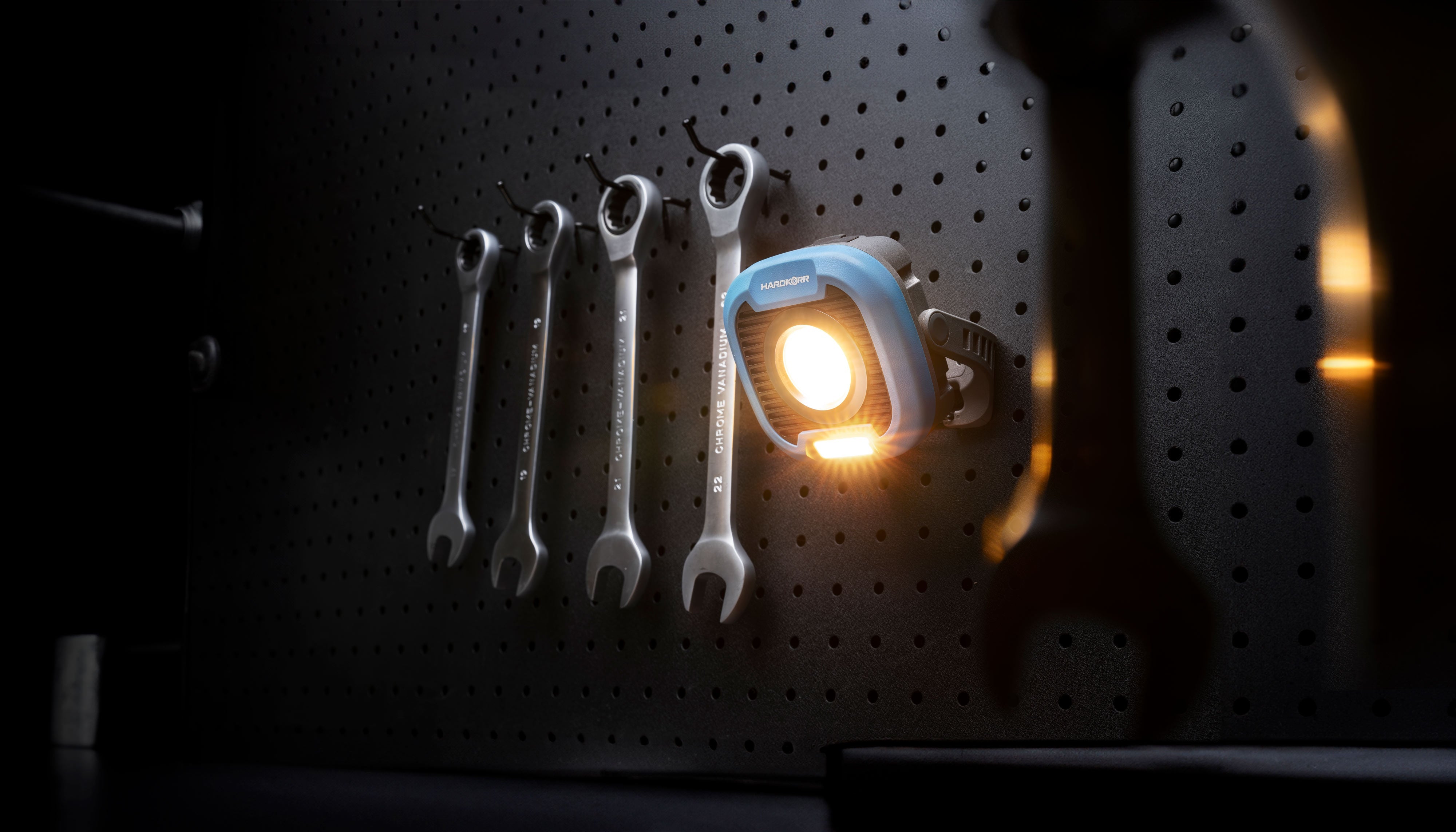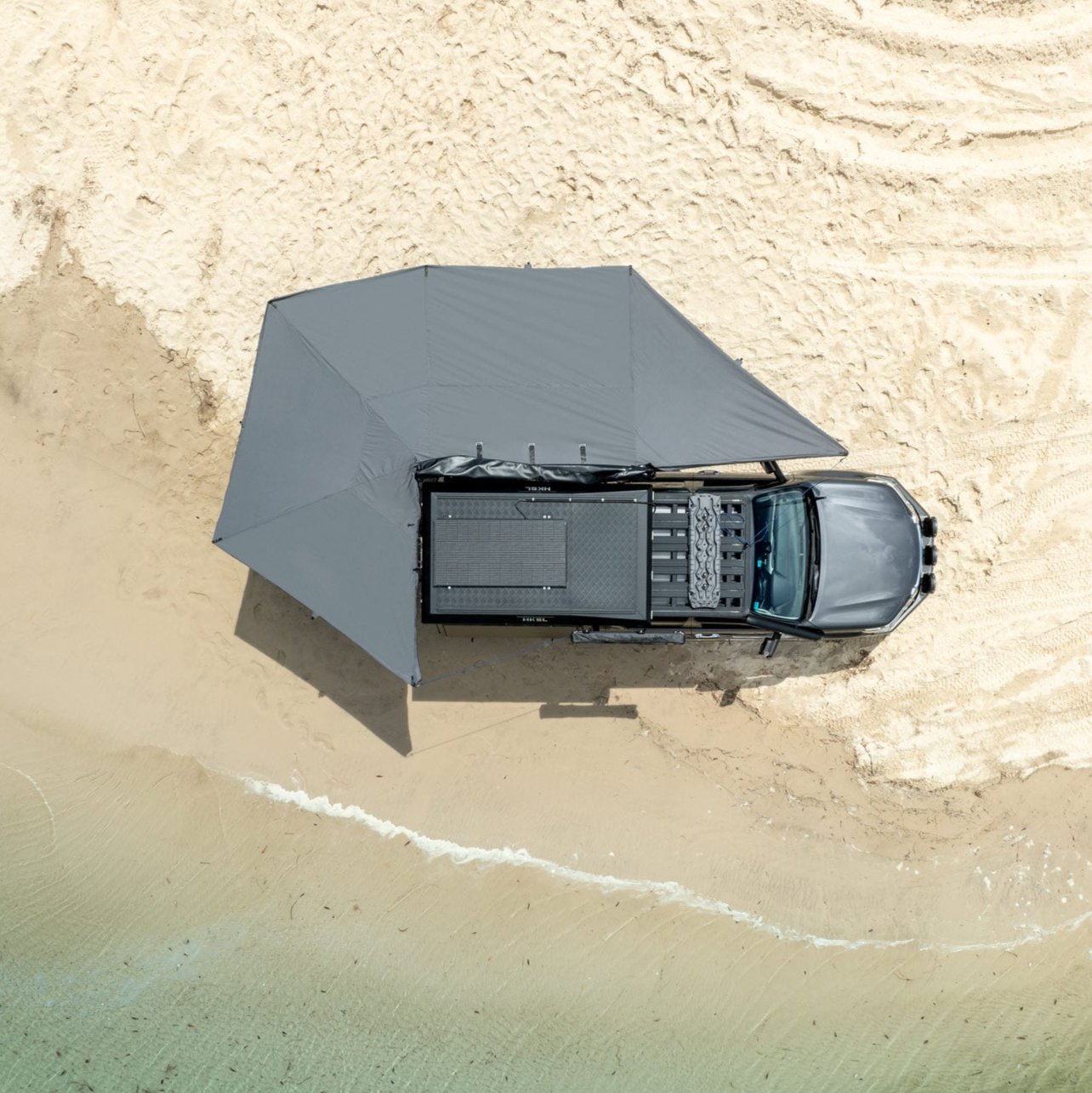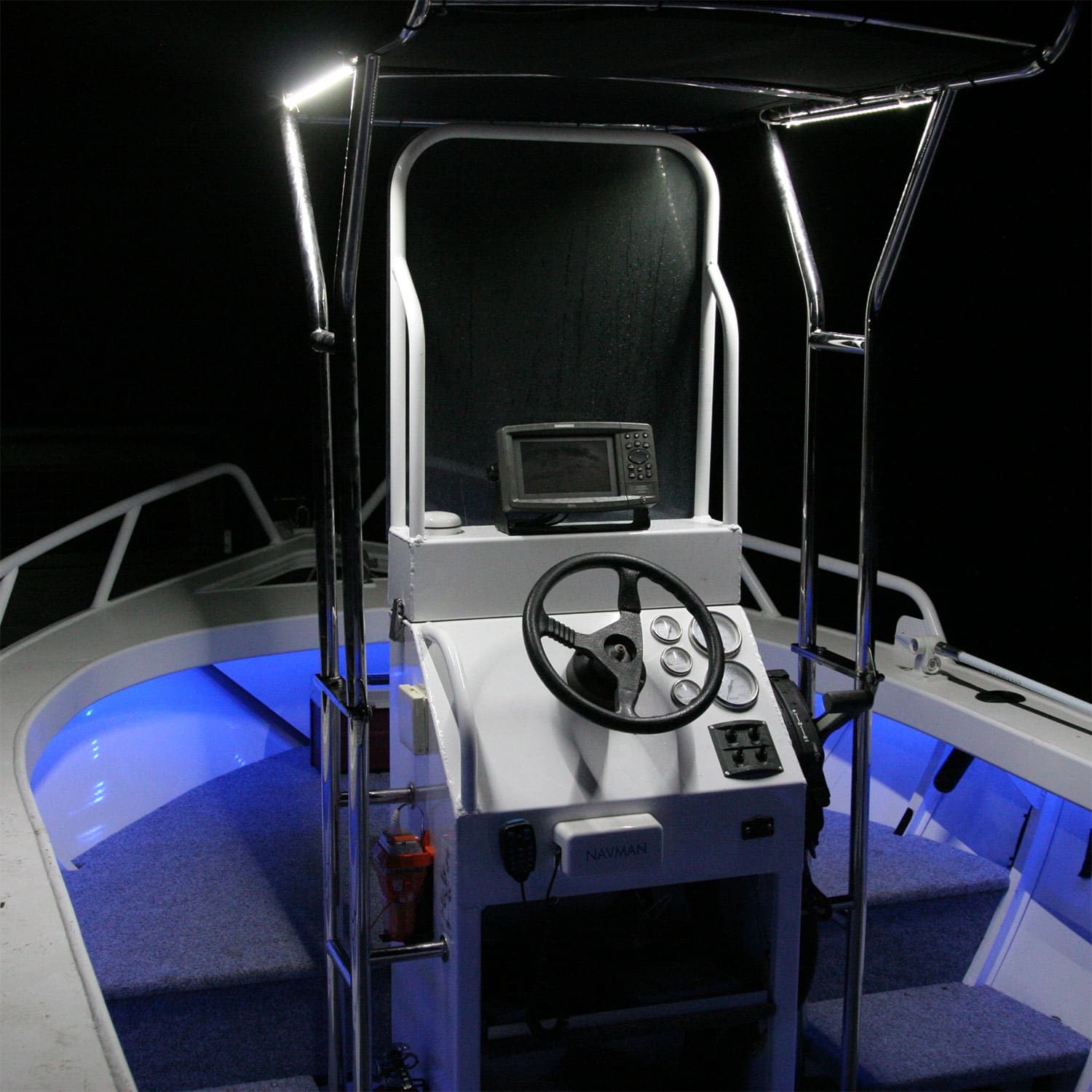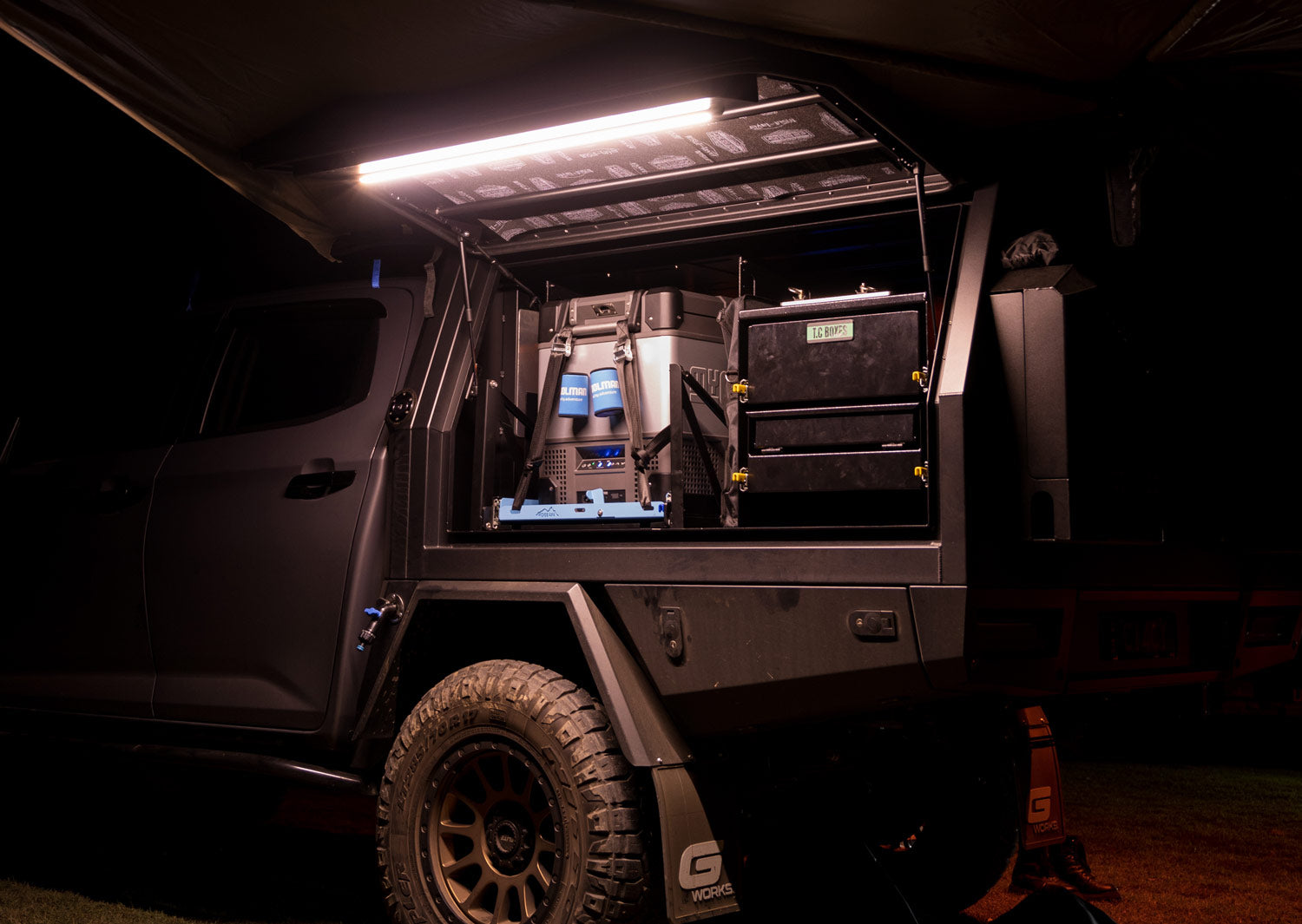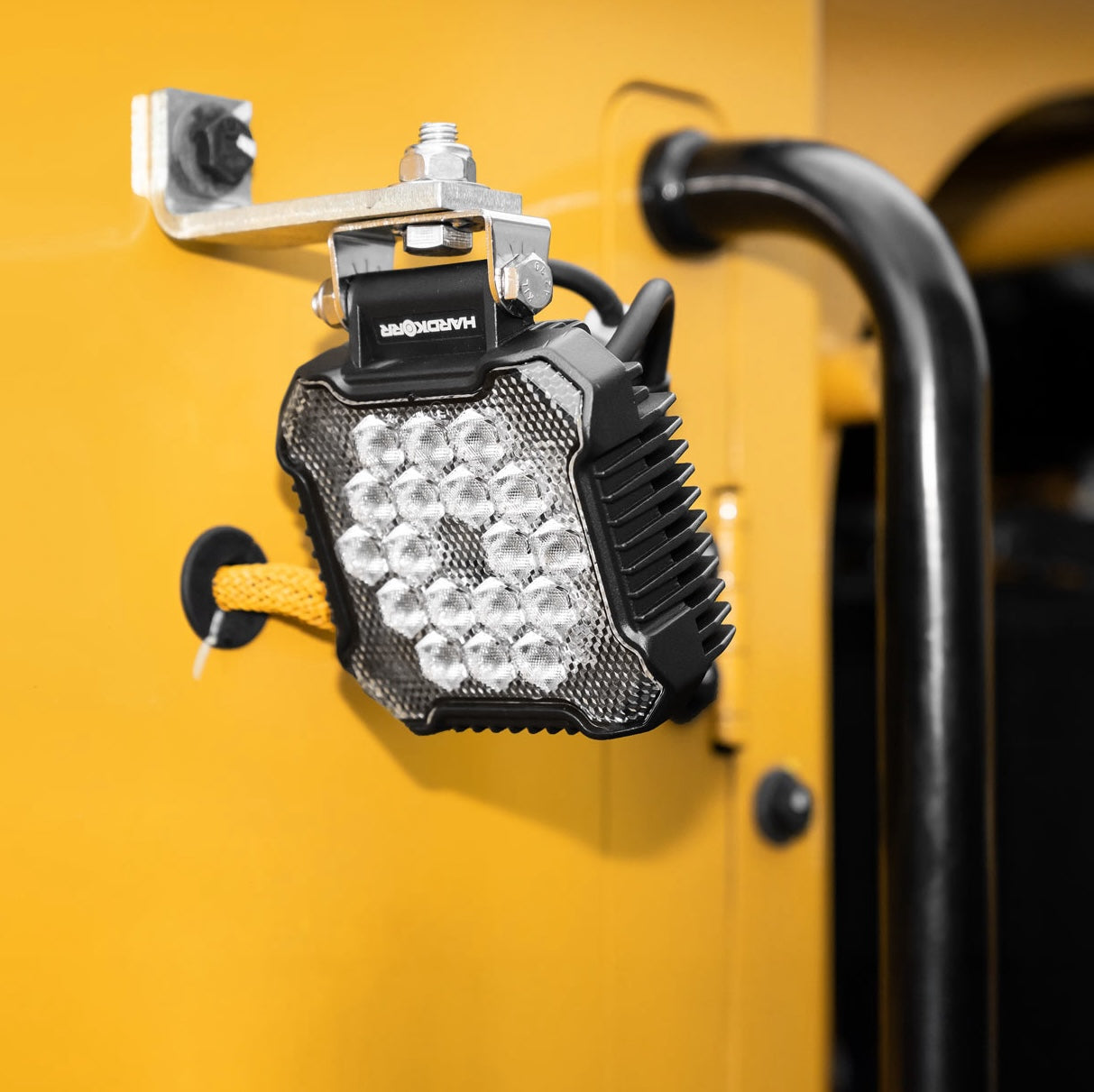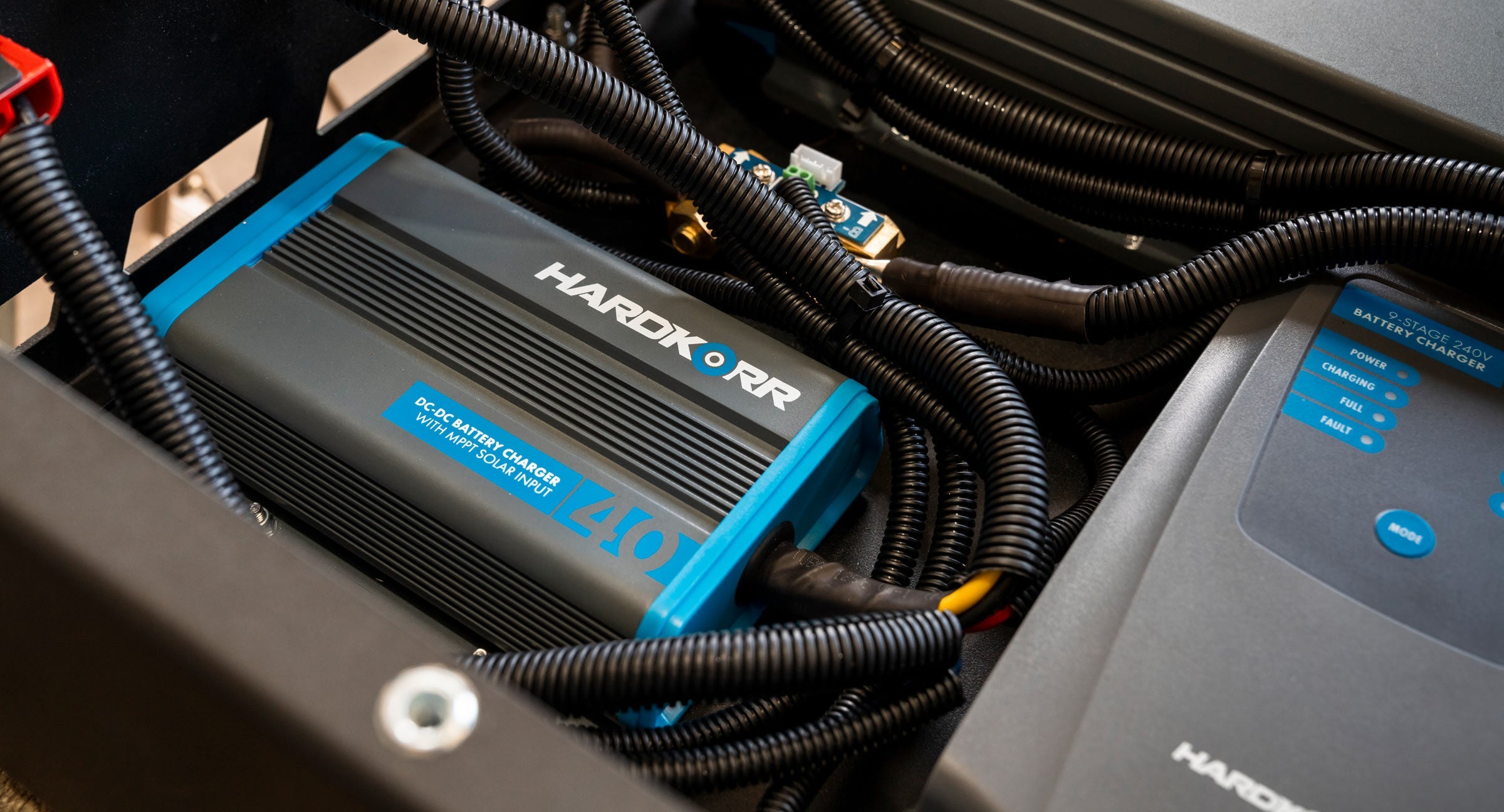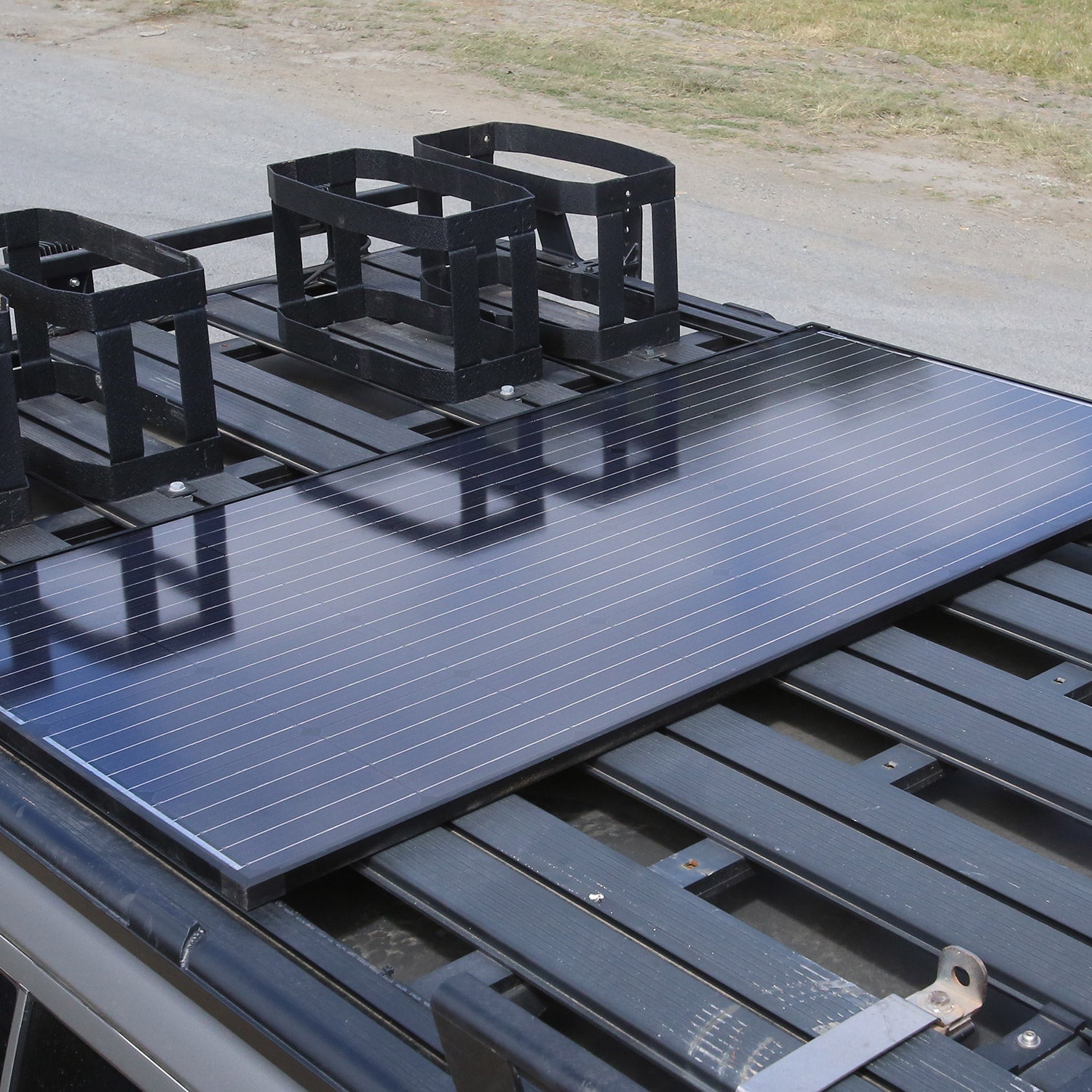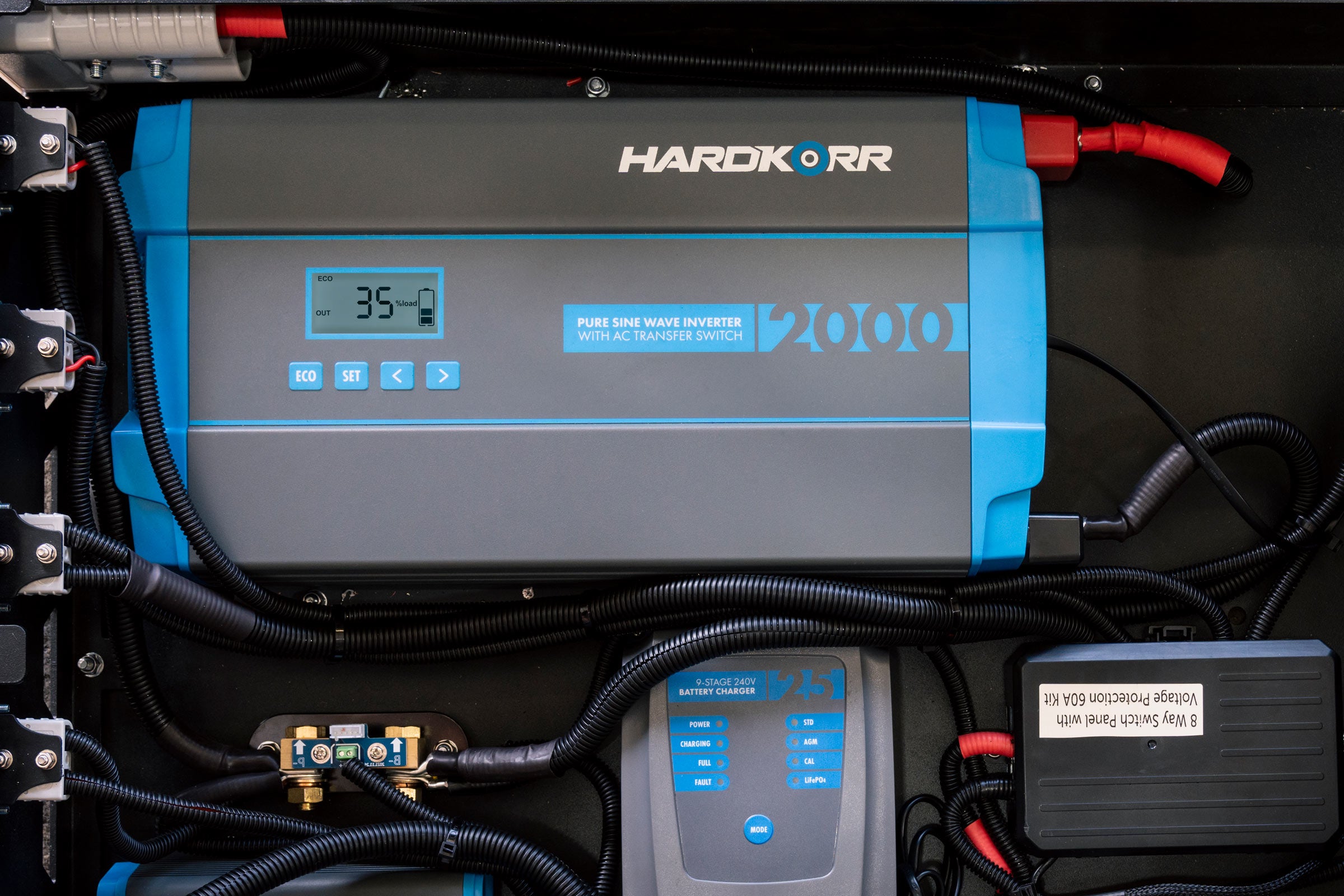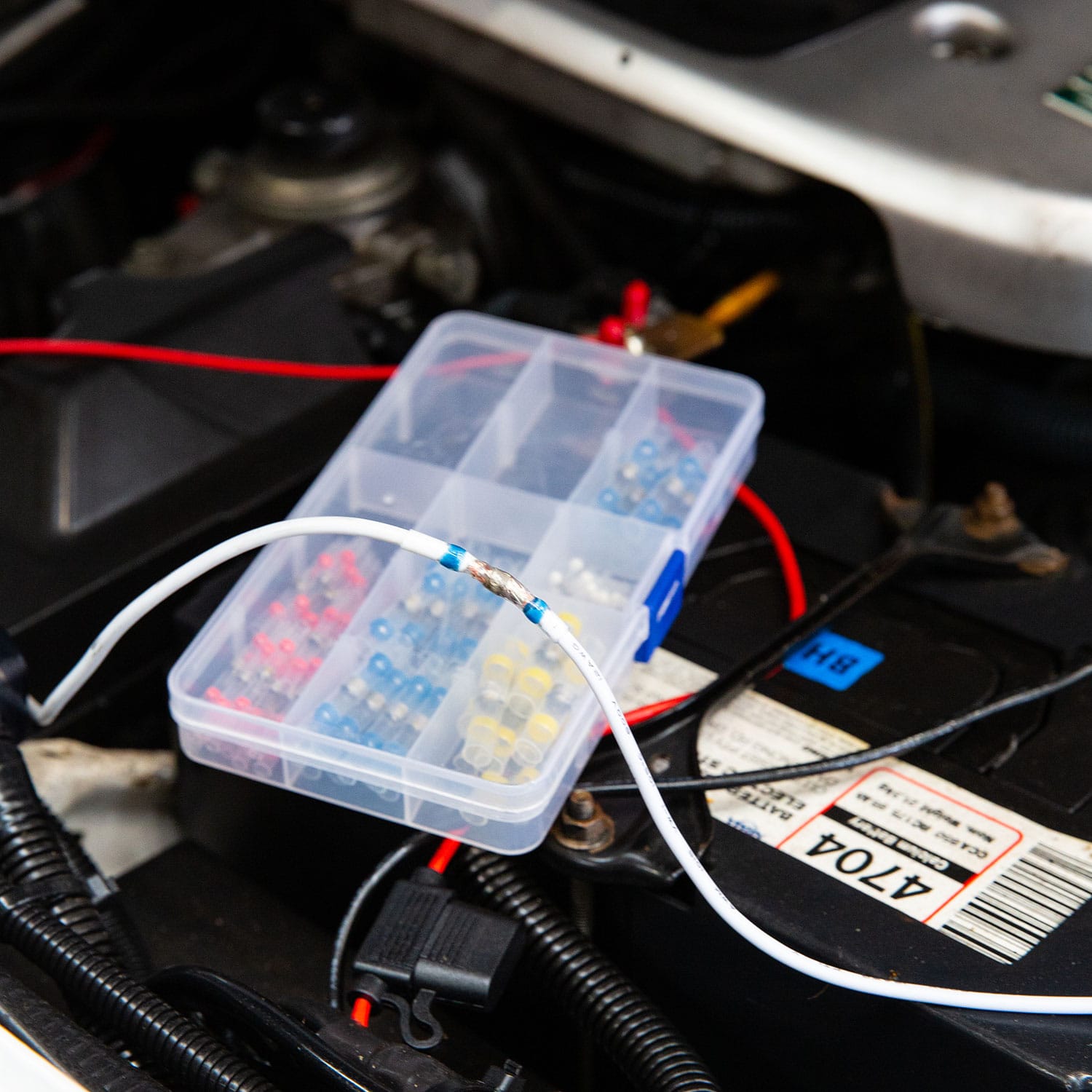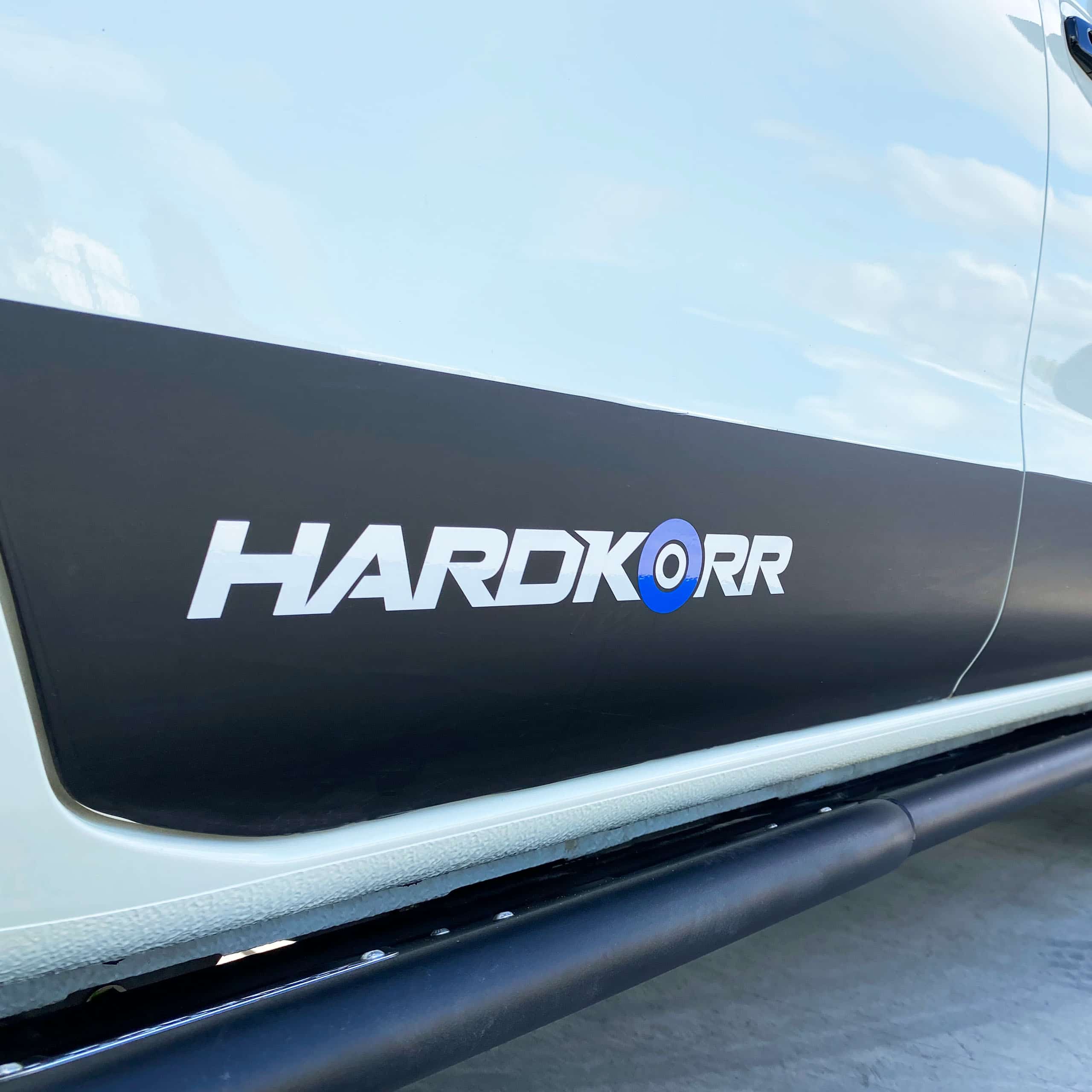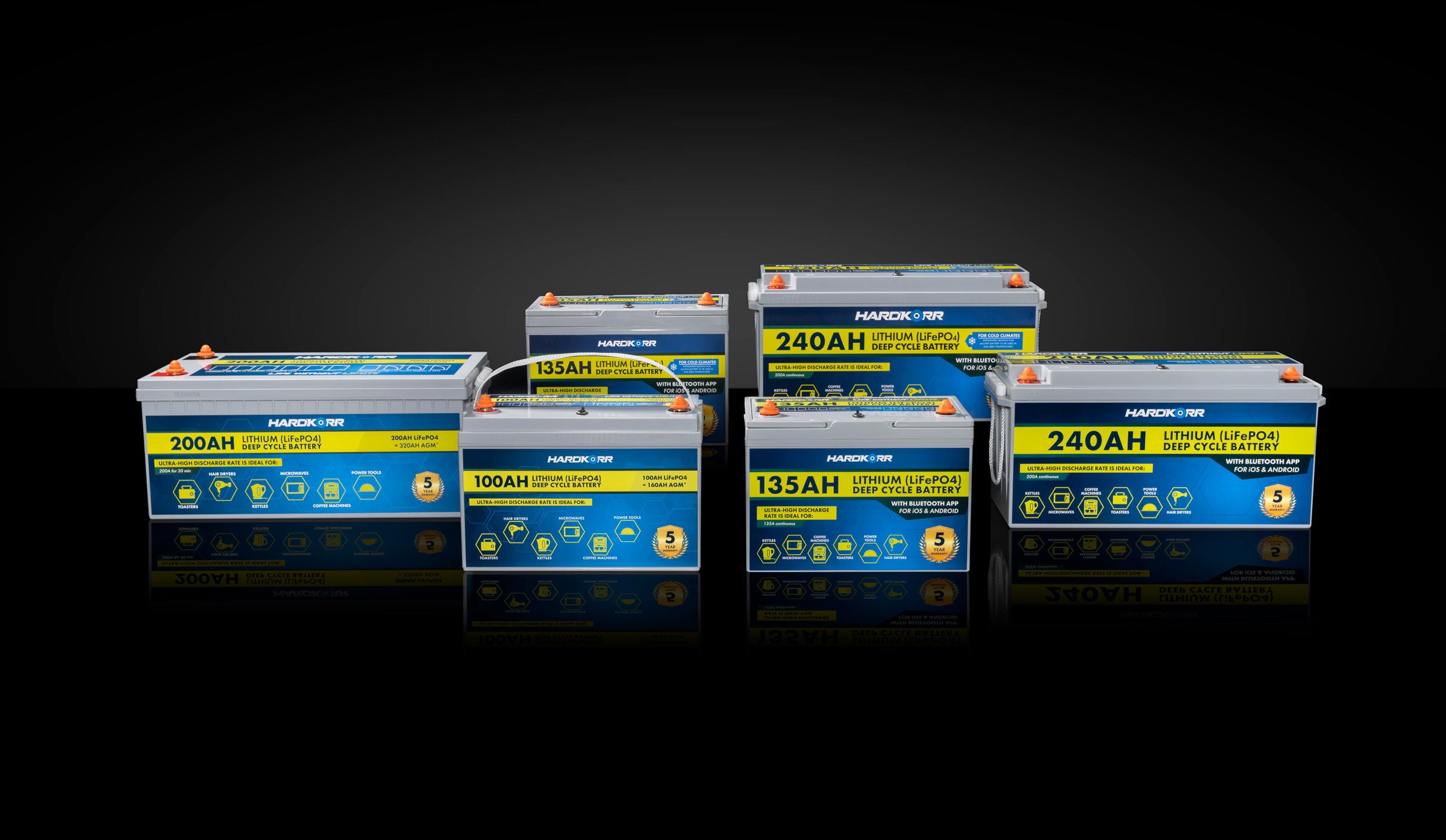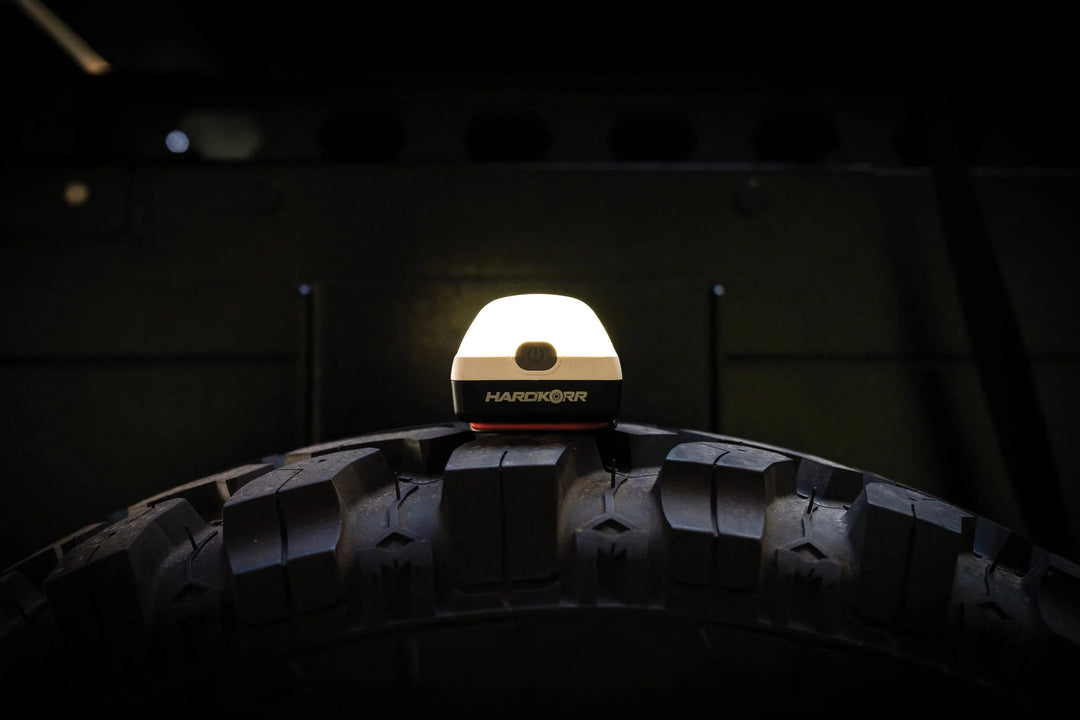With campsites becoming increasingly reliant on electrical power, it is important to ensure that you are selecting the right deep cycle batteries for your application and that you understand their strengths and weaknesses. This guide aims to explain in plain English everything you need to know to confidently purchase your next 12V battery.
What is a Deep Cycle Battery? How Do They Differ from Normal 12V Batteries?
Normal 12V batteries, often called start batteries or crank batteries, are designed primarily to provide a short, high-current burst of power, for example to turn over a vehicle engine. Generally, only a small portion of the battery’s total capacity is ever used, and this is quickly restored by the alternator. They are not suitable for providing sustained power on a regular basis.
Deep cycle batteries, on the other hand, are designed to be deeply discharged without harming the battery, hence the name. They are unable to provide the high-current burst that a crank battery can, but they can provide continuous power for much longer periods of time.
Physically, the main difference between deep cycle and starter batteries is that deep cycle batteries have thicker battery plates and denser active paste material, allowing them to withstand the deeper charge cycles, whereas starter batteries have thinner plates and less dense active material to maximise surface area, allowing them to deliver higher starting power.
Common Terms
Batteries are highly technical products, and the terms used to describe their various features and operation can get confusing.
Volts, Amps, Watts
The three most common terms associated with electrical devices such as batteries are voltage (volts / V), amperage (amps / A) and wattage (watts / W).
Voltage (V) is a measure of the force with which an electrical current is flowing through an electrical line, whereas amperage measures how much electrical energy is being supplied through the line. Watts is a measure of total system power, and is calculated by multiplying Volts and Amps.
These terms can be confusing to understand, but a handy analogy to use is that of a garden hose. In this analogy, volts represents the water pressure and amps represents the flow rate.
In a 12V system, more electricity is used (measured in amps) to provide a given wattage compared to a 240V system. This is important to note when determining whether a particular appliance (whose power draw is commonly measured in watts) can be used in a 12V system. A 1200W toaster will only use 5A in a 240V system but will use 100A in a 12V system!
Amp-hours (Ah)
Amp-hours (Ah) is the most common calculation used to state the capacity of a battery. Theoretically, it can be thought of as the total number of amps that the battery can deliver over the period of one hour, although in practice the meaning of amp-hours is a little more complex. This is because batteries will have the capacity to deliver a different number of amps depending on the speed at which the battery is discharged.
To reduce confusion and help to standardise the measurement of battery capacity, most reputable battery manufacturers will quote the capacity of their battery in amp-hours at C20 (also written as C/20), which means the number of amps the battery can deliver if discharged at a constant rate over a period of 20 hours. Using this standard, a fully-charged battery with a capacity of 100Ah could deliver 5A of current per hour for a period of 20 hours before becoming fully discharged (5A x 20h).
BEWARE
Some less reputable battery manufacturers will use a “nominal” capacity to describe the performance of their battery. Nominal capacities can exceed the C20 rating by up to 20%, so it is important to keep this in mind when comparing batteries from different suppliers.
Nominal Voltage
The nominal voltage of a battery represents the voltage at which the battery sits during the majority of its discharge cycle. It is also an approximate mid-point between the maximum voltage of the battery and the fully-discharged voltage.
For example, Hardkorr LiFePO4 batteries have a maximum voltage of 14.4V, a nominal voltage of 12.8V, and a fully-discharged voltage of 10.0V. This means that when the battery is fully charged it will have a voltage of 14.4V, and once it begins discharging the voltage will drop to about 12.8V (+/- 0.5V). It will remain within this voltage range through the majority of its discharge cycle, and as it becomes close to fully discharged the voltage will begin to decrease more quickly until it hits 10.0V.
Cold Cranking Amps (CCA)
CCA is a term normally associated with cranking batteries. It is used to measure the ability of the battery to start an engine at cold temperatures. CCA is calculated by measuring the number of amps the battery can deliver at 0°F for 30 seconds while maintaining a voltage above 7.2V.
Each vehicle will require a different CCA rating to start effectively. It is generally higher for diesel engines compared to petrol engines, and higher in cold weather compared to warm weather.
Deep cycle batteries will generally not stipulate a CCA rating, because they are not designed for this purpose.
Types of Deep Cycle Batteries
Absorbent Glass Mat (AGM) Batteries
AGM batteries contains electrolytes which has been absorbed into porous fibreglass mats. Compared to wet cell batteries, AGM deep cycle batteries can handle higher temperatures, will self-discharge at a much lower rate, and have lower internal resistance, meaning they can accept a higher charge current and thus will charge more quickly.
Because the AGM battery is fully sealed, it is much easier and safer to transport. It does not have to be mounted upright in a sealed container vented to the outside; rather, it can be mounted either on its sides or on its ends and can vent to the atmosphere. An AGM battery is also maintenance-free, in that it does not require topping up with distilled water like wet cell batteries.
AGM batteries have for many years been the most common choice for camping and 4x4 use, due to their low price point and safety. However, in recent years their use has begun to decrease in favour of Lithium batteries, where technology is improving quickly and prices are decreasing.
Lithium Batteries
As we just mentioned, Lithium deep cycle batteries are rapidly overtaking AGM batteries as the battery of choice for 4wd and camping. In the past they were very expensive to buy, prone to failure and difficult to handle safely, however this is no longer the case.
The advantages of lithium deep cycle batteries compared to their sealed lead acid (SLA) forebears such as AGM batteries are numerous. Firstly, they are much lighter, generally weighing about one-third to half that of equivalent capacity SLA’s. They can handle up to 8 times as many charge cycles as an SLA battery, and can discharge very close to 100% of their capacity without damaging the cells, compared to just over 50% for SLA batteries. Lithium batteries have extremely low internal resistance, meaning they can charge very quickly and efficiently. They will charge to more than 90% of capacity in 1-3 hours, compared to SLA batteries which will generally charge to around 80% of capacity in around 5-8 hours.
There are several different types of lithium batteries, each with distinct advantages and disadvantages.
Other Types
AGM and Lithium are the most common types of deep cycle batteries on the market. There are also a couple of other types available:
Flooded Lead Acid batteries (wet cell) were the first type of deep cycle battery produced, and they are still somewhat popular today due primarily to their low cost, despite being heavy and maintenance-intensive making them unsuitable for use as a boat battery
Gel Lead Acid Batteries are similar to wet cell batteries but have a gel-based electrolyte, which eliminates evaporation and makes them much more resistant to extreme temperatures and vibration. They also tend to have a longer service life than AGM batteries, although are more sensitive to overcharge and over-discharge.
Charging & Discharging Deep Cycle Batteries
Why Do Different Types of Batteries Need Different Charging Programs?
Various types of deep cycle batteries need to be charged slightly differently to take into account variations in their chemistry.
A few examples of this are as follows:
- A fully-charged lithium battery will sit around 14.4V, whereas a fully-charged AGM battery will be around 13.0V, and so the charger needs to be aware of what battery type is being charged to ensure it knows when the battery is full;
- Wet/Flooded and Calcium batteries require an equalization charge to be applied periodically (or after heavy discharge) to bring the cells into balance, whereas others do not;
- Lithium batteries do not require a float/maintenance stage to maintain charge level once fully charged, whereas other batteries do.
Charging your battery using an unsuitable charge program will result in a shorter service life and, in some cases, irreversible damage to the battery cells.
Depth of Discharge
Depth of discharge (DOD) refers to the amount of current (amps) drawn from a battery compared to its total capacity in a single cycle (i.e. without recharging the battery). For example, if you have a 100AH AGM battery and you draw 50A from it without recharging, your depth of discharge is 50%.
Each type of deep cycle battery has a different DOD which is considered ‘safe’ i.e. will not cause the battery to prematurely deteriorate and fail. The generally accepted safe DODs for common deep cycle battery types are as follows:
Lithium: 80%
AGM: 50%
Gel: 50%
Flooded: 50%
Maximum Discharge Rate
The maximum discharge rate is the maximum current which can be drawn from a battery over a given period of time. It is commonly measured in either amps per hour or C-rate (C).
Amps per hour is a simple measurement and easy to understand, however C-rate requires some further explanation. C-rate is measured by dividing the maximum discharge current in amps per hour by the battery’s total capacity. For example, a 1C battery means the battery can be completely discharged in one hour; taking the example of a 100AH battery with a 1C rating, it means that the battery can discharge 100A over one hour (100A / 100AH = 1).
Maximum discharge rates are dependent on a number of factors, primarily the type of battery and the quality of its construction. Generally speaking, Lithium batteries will have a lower maximum discharge rate than other types of deep cycle batteries, however the gap is closing as lithium technology improves.
Depth of Discharge
Depth of discharge (DOD) refers to the amount of current (amps) drawn from a battery compared to its total capacity in a single cycle (i.e. without recharging the battery). For example, if you have a 100AH AGM battery and you draw 50A from it without recharging, your depth of discharge is 50%.
Each type of deep cycle battery has a different DOD which is considered ‘safe’ i.e. will not cause the battery to prematurely deteriorate and fail. The generally accepted safe DODs for common deep cycle battery types are as follows:
Lithium: 80%
AGM: 50%
Gel: 50%
Flooded: 50%
Maximum Discharge Rate
The maximum discharge rate is the maximum current which can be drawn from a battery over a given period of time. It is commonly measured in either amps per hour or C-rate (C).
Amps per hour is a simple measurement and easy to understand, however C-rate requires some further explanation. C-rate is measured by dividing the maximum discharge current in amps per hour by the battery’s total capacity. For example, a 1C battery means the battery can be completely discharged in one hour; taking the example of a 100AH battery with a 1C rating, it means that the battery can discharge 100A over one hour (100A / 100AH = 1).
Maximum discharge rates are dependent on a number of factors, primarily the type of battery and the quality of its construction. Generally speaking, Lithium batteries will have a lower maximum discharge rate than other types of deep cycle batteries, however the gap is closing as lithium technology improves.


